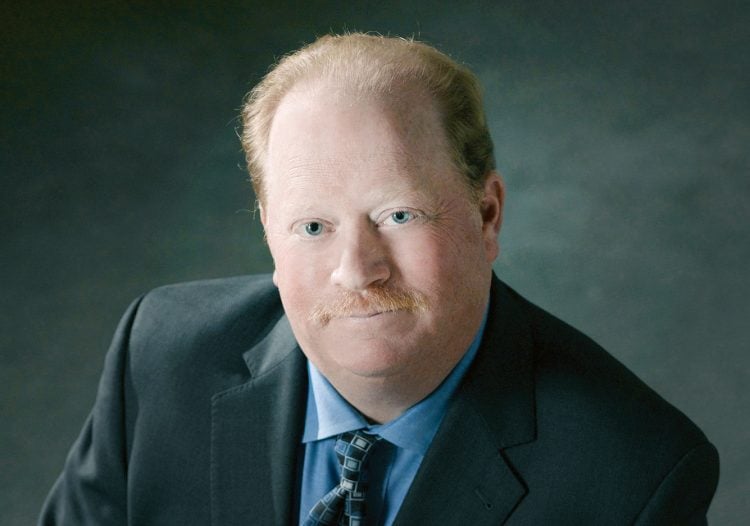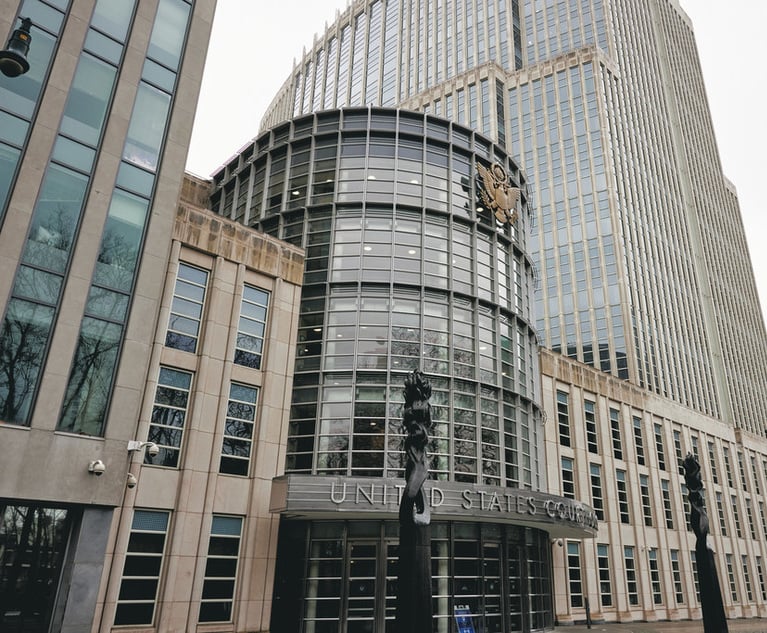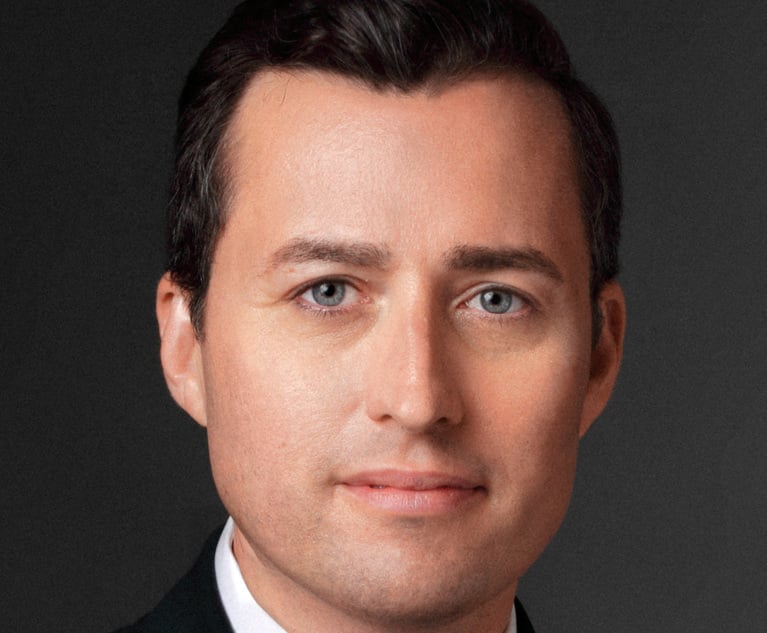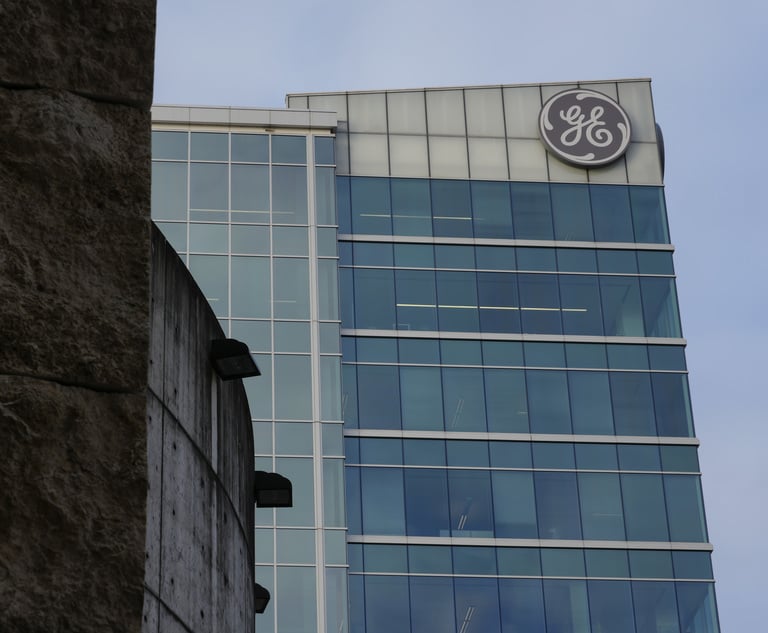N.Y. Court of Appeals Poised To Resolve Split Over Bad Faith Suits Against Insurers
The New York Court of Appeals is set to decide an important issue of insurance law and statutory interpretation that has divided the Appellate Division Departments. In his Insurance Fraud column, Evan H. Krinick discusses 'Haar v. Nationwide Mutual Fire Ins. Co.'
October 31, 2019 at 12:45 PM
10 minute read
 Evan H. Krinick, managing partner, Rivkin Radler
Evan H. Krinick, managing partner, Rivkin Radler
After hearing oral argument earlier this month in Haar v. Nationwide Mutual Fire Ins. Co., 32 N.Y.3d 1211 (2019), the New York Court of Appeals is set to decide an important issue of insurance law and statutory interpretation that has divided the Appellate Division Departments.
In Elkoulily v. New York State Catholic Heathplan, 153 A.D.3d 768 (2d Dept. 2017), the Second Department ruled that New York Public Health Law §230(11)(b), which immunizes reports of professional misconduct made in good faith to the New York State Office of Professional Medical Conduct (OPMC), "does not create a private right of action" for reports allegedly made in bad faith. The First Department reached the opposite result, finding an implied right of action under §230(11)(b) in Foong v. Empire Blue Cross & Blue Shield, 305 A.D.2d 330 (1st Dept. 2003).
Now, with Haar, the court is prepared to resolve the split once and for all. Although the court's impending decision will have important ramifications for all those who file reports with the OPMC, the impact may be greatest on insurance companies, which are required to report suspected instances of insurance fraud to state authorities. A decision by the court authorizing bad faith lawsuits against insurance companies could expose them to untold numbers of lawsuits alleging bad faith brought by physicians who are the subjects of reports insurers are mandated to file by law. Causes of action for bad faith typically are not dismissed at the pleading stage, or even at summary judgment, which would impose significant litigation costs on insurers for reports they file in an effort to protect the public. It is no wonder, therefore, that health care providers as well as insurance companies are eagerly awaiting the court's ruling.
The Case
The case arose in 2012, when Robert D. Haar, an orthopedic surgeon, provided treatment to several patients injured in accidents involving vehicles for which Nationwide Mutual Fire Insurance Company was the insurer.
After treating these patients, Haar submitted claims to Nationwide for payment of the medical treatment he provided. Nationwide denied one claim in full based on a peer review report that concluded that there was "no cause and effect relationship" between the injuries treated and the alleged accident. With respect to the three other claims, the insurer only partially reimbursed Haar because of the applicable fee schedule.
In October 2012, Nationwide submitted a complaint, as it was required to do pursuant to New York's no-fault law and implementing regulations, N.Y. Insurance Law §5108(c) and 11 N.Y.C.R.R. §68.8.A-54-55, to the OPMC and the New York Insurance Frauds Bureau with respect to Haar's conduct for the four patients.
On Jan. 27, 2017, the OPMC notified Haar that it had concluded an investigation. The OPMC took no disciplinary action against Haar.
Haar then sued Nationwide, asserting a claim for bad faith reporting in violation of §230(11)(b) and a claim for defamation. Section 230(11)(b) states that, "[a]ny person, organization, institution, insurance company, osteopathic or medical society who reports or provides information to the [OPMC] in good faith, and without malice shall not be subject to an action for civil damages or other relief as the result of such report."
The U.S. District Court for the Southern District of New York dismissed Haar's defamation claim as untimely. It also dismissed Haar's claim under §230(11)(b), declaring that if the New York Court of Appeals were faced with the question, it "would hold that this statute does not create a private right of action."
Haar appealed to the Second Circuit, which certified the following question to the New York Court of Appeals: Does New York Public Health Law §230(11)(b) create a private right of action for bad faith and malicious reporting to the Office of Professional Medical Conduct?
The Law
Section 230(11)(b) does not specifically provide for a private right of action for bad faith. To determine whether such a right can be implied under §230(11)(b), one can look to the three-factor test set forth by the Court of Appeals in Sheehy v. Big Flats Community Day, 73 N.Y.2d 629 (1989):
(1) Whether the plaintiff is one of the class for whose particular benefit the statute was enacted;
(2) Whether recognition of a private right of action would promote the legislative purpose; and
(3) Whether creation of such a right would be consistent with the legislative scheme.
If any of these factors is not met, courts will not find an implied right of action.
In Elkoulily, the Second Department applied the three-factor test. Focusing on the first factor, the appellate court reasoned that the stated purpose of §230(11)(b) is to protect parties "who have made complaints" to the OPMC—and not to protect physicians. The statute, the Second Department found, creates a "defense to an action for civil damages or other relief" and does not create a private right of action.
In Foong, the First Department, with limited analysis, held that a plaintiff had an implied right of action under §230(11)(b). In its decision, the First Department first addressed whether a plaintiff had an implied right of action under New York Public Health Law §4406-d, which provides that a health care plan "shall not terminate a contract with a health care professional unless the health care plan provides to the health care professional a written explanation of the reasons for the proposed contract termination and an opportunity for a review or hearing as hereinafter provided." The First Department said that §4406-d "gives health care providers a measure of due process, in the form of peer review, against the arbitrary termination of health care plan contracts, but does not provide for any means of enforcement." In holding that a private right of action exists, the First Department rejected the argument that a private right of action would "thwart [a defendant's] statutory right to terminate a [health care] provider immediately, without a hearing, in cases of imminent harm to patient care and fraud," noting that defendants remain free "to terminate a provider without a hearing, although … grounds for doing so are subject to judicial review."
The First Department, with no further analysis of the text or purpose of §230(11)(b), remarked that §230(11)(b) also creates a private right of action "[f]or similar reasons," simply observing that §230(11)(b) "immunizes from suit insurers and others who make good faith reports to" the OPMC.
The Parties' Arguments
In the briefs they filed with the Court of Appeals, and in their oral argument, Haar and Nationwide obviously took divergent views about §230(11)(b).
Focusing on the first factor of the three-factor test, Haar argued that physicians are among the class intended to be protected by §230, noting that it is "replete with provisions protecting physicians who are the subject of reports of alleged professional misconduct."
With respect to the second factor, Haar asserted that there are "myriad" provisions in §230 that strike a balance between protecting good faith reporters to the OPMC, while simply adding that the statute recognizes that those who report or participate in bad faith "should be subject to civil liability." Because there is no express enforcement mechanism to limit bad faith reporting, implying a right of action for bad faith reporting would "necessarily further the purpose of Section 230," in Haar's view.
Finally, Haar argued that the third factor "strongly" favors implying a private right of action because the statute contains "no mechanism whatever to address bad faith reports."
For its part, Nationwide argued, as a number of courts have ruled, that medical licensees are not the intended beneficiaries of §230 but, rather, that the legislature intended §230 to be enforced "against, not by, medical licensees." An implied right of action, Nationwide asserted, would not fulfill the law's objective: to deter physician misconduct.
The insurer also argued that a private right of action was inconsistent with the legislature's chosen mechanism to enforce the law, namely, administrative investigations of and penalties for licensee misconduct.
Nationwide also pointed out that insurers are required by the state's no-fault law and regulations to report "patterns of overcharging, excessive treatment or other improper actions by a health provider." Moreover, Nationwide observed, licensees have remedies available to them for malicious reporting, including defamation claims. To encourage reporting, Nationwide argued, §230 "immunized reporting in good faith."
Immunity for good faith reporting, Nationwide concluded, "does not translate into the converse—an implied right of action for bad faith reporting."
An amicus brief filed by the Coalition Against Insurance Fraud and the National Crime Insurance Bureau argued that the legislature meant §230(11)(b) "to function as a litigation shield, not as a litigation sword to be wielded by physicians against whom confidential complaints of professional misconduct had been lodged." Similarly, an amicus brief field by the New York Insurance Association, Inc. (NYIA), the National Association of Mutual Insurance Companies (NAMIC), and the American Property Casualty Insurance Association (APCIA) contended that the purpose of the statute was "served by limiting causes of action against complainants, not by creating an entirely new cause of action against them."
Conclusion
The court should not rely on a negative implication in §230(11)(b) to find a private right of action against insurers—and other parties, including patients—who either are required by law to file reports with the OPMC or who do so in an effort to protect the public. It would require a large leap to conclude that such a remedy is implied in the statute and, as Court of Appeals Judge Eugene M. Fahey observed at oral argument, quoting Justice Antonin Scalia, legislatures generally do not "hide elephants in mouseholes."
Indeed, implying a private right of action under §230(11)(b) would mean that almost any reporter at almost any time could be subject to a lawsuit alleging bad faith, which certainly would dampen their interest in reporting and would diminish the ability of the OPMC and the state to combat no-fault and other insurance fraud, and physician misconduct. The broad nature of bad faith claims, without clearly defined elements, would lead to endless litigation.
While confidential OPMC proceedings might impose a burden on medical licensees, that is the process the legislature in New York has chosen to protect the public, and for good reason. Protecting the public is far more important than giving a remedy to doctors, and is the policy choice the legislature has made. For all these reasons, the court will hopefully answer the certified question in the negative and hold that §230(11)(b) does not create a private right of action.
Evan H. Krinick, managing partner of Rivkin Radler, can be reached at [email protected].
This content has been archived. It is available through our partners, LexisNexis® and Bloomberg Law.
To view this content, please continue to their sites.
Not a Lexis Subscriber?
Subscribe Now
Not a Bloomberg Law Subscriber?
Subscribe Now
NOT FOR REPRINT
© 2025 ALM Global, LLC, All Rights Reserved. Request academic re-use from www.copyright.com. All other uses, submit a request to [email protected]. For more information visit Asset & Logo Licensing.
You Might Like
View All
Insurance Company Sues Over 180 Health Care Providers for Fraud Under RICO
3 minute read
New York Court of Appeals Tightens Pleading Standards Against Insurance Policyholder
7 minute read
Amid Growing Litigation Volume, Don't Expect UnitedHealthcare to Change Its Stripes After CEO's Killing
6 minute read
GE Agrees to $362.5M Deal to End Shareholder Claims Over Power, Insurance Risks
2 minute readTrending Stories
Who Got The Work
J. Brugh Lower of Gibbons has entered an appearance for industrial equipment supplier Devco Corporation in a pending trademark infringement lawsuit. The suit, accusing the defendant of selling knock-off Graco products, was filed Dec. 18 in New Jersey District Court by Rivkin Radler on behalf of Graco Inc. and Graco Minnesota. The case, assigned to U.S. District Judge Zahid N. Quraishi, is 3:24-cv-11294, Graco Inc. et al v. Devco Corporation.
Who Got The Work
Rebecca Maller-Stein and Kent A. Yalowitz of Arnold & Porter Kaye Scholer have entered their appearances for Hanaco Venture Capital and its executives, Lior Prosor and David Frankel, in a pending securities lawsuit. The action, filed on Dec. 24 in New York Southern District Court by Zell, Aron & Co. on behalf of Goldeneye Advisors, accuses the defendants of negligently and fraudulently managing the plaintiff's $1 million investment. The case, assigned to U.S. District Judge Vernon S. Broderick, is 1:24-cv-09918, Goldeneye Advisors, LLC v. Hanaco Venture Capital, Ltd. et al.
Who Got The Work
Attorneys from A&O Shearman has stepped in as defense counsel for Toronto-Dominion Bank and other defendants in a pending securities class action. The suit, filed Dec. 11 in New York Southern District Court by Bleichmar Fonti & Auld, accuses the defendants of concealing the bank's 'pervasive' deficiencies in regards to its compliance with the Bank Secrecy Act and the quality of its anti-money laundering controls. The case, assigned to U.S. District Judge Arun Subramanian, is 1:24-cv-09445, Gonzalez v. The Toronto-Dominion Bank et al.
Who Got The Work
Crown Castle International, a Pennsylvania company providing shared communications infrastructure, has turned to Luke D. Wolf of Gordon Rees Scully Mansukhani to fend off a pending breach-of-contract lawsuit. The court action, filed Nov. 25 in Michigan Eastern District Court by Hooper Hathaway PC on behalf of The Town Residences LLC, accuses Crown Castle of failing to transfer approximately $30,000 in utility payments from T-Mobile in breach of a roof-top lease and assignment agreement. The case, assigned to U.S. District Judge Susan K. Declercq, is 2:24-cv-13131, The Town Residences LLC v. T-Mobile US, Inc. et al.
Who Got The Work
Wilfred P. Coronato and Daniel M. Schwartz of McCarter & English have stepped in as defense counsel to Electrolux Home Products Inc. in a pending product liability lawsuit. The court action, filed Nov. 26 in New York Eastern District Court by Poulos Lopiccolo PC and Nagel Rice LLP on behalf of David Stern, alleges that the defendant's refrigerators’ drawers and shelving repeatedly break and fall apart within months after purchase. The case, assigned to U.S. District Judge Joan M. Azrack, is 2:24-cv-08204, Stern v. Electrolux Home Products, Inc.
Featured Firms
Law Offices of Gary Martin Hays & Associates, P.C.
(470) 294-1674
Law Offices of Mark E. Salomone
(857) 444-6468
Smith & Hassler
(713) 739-1250






